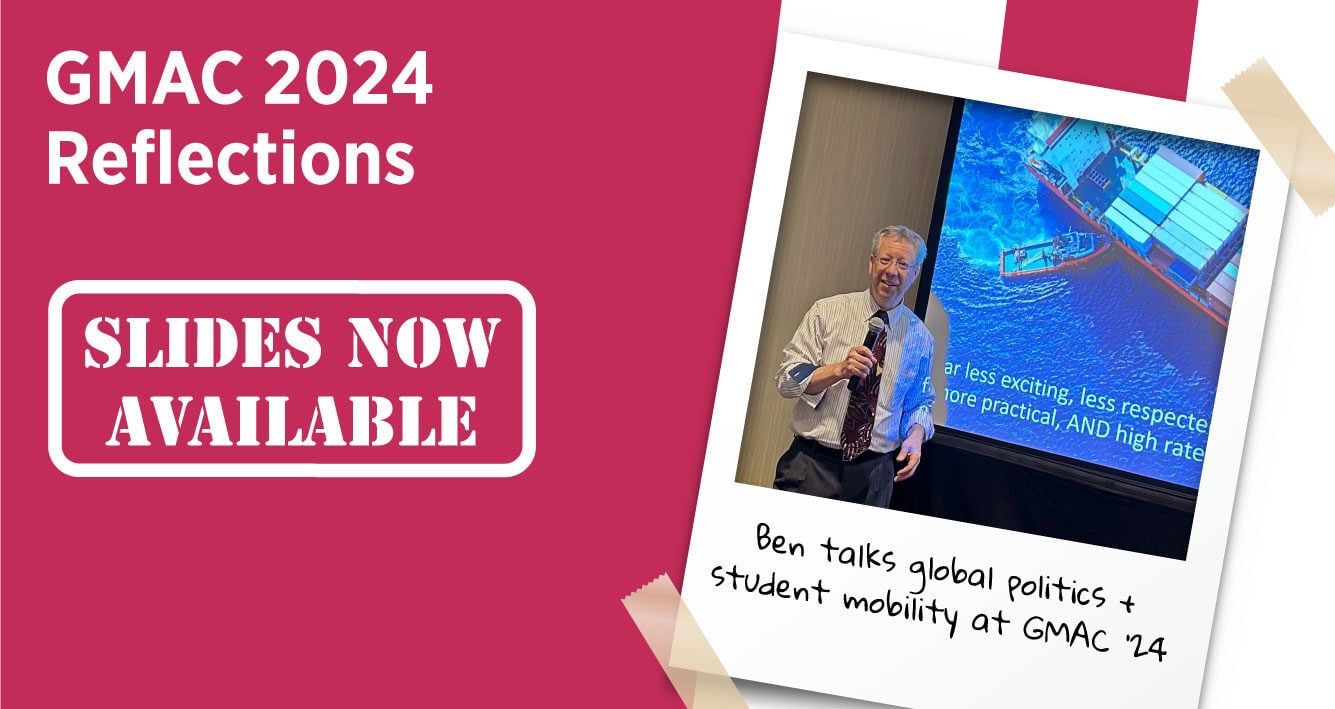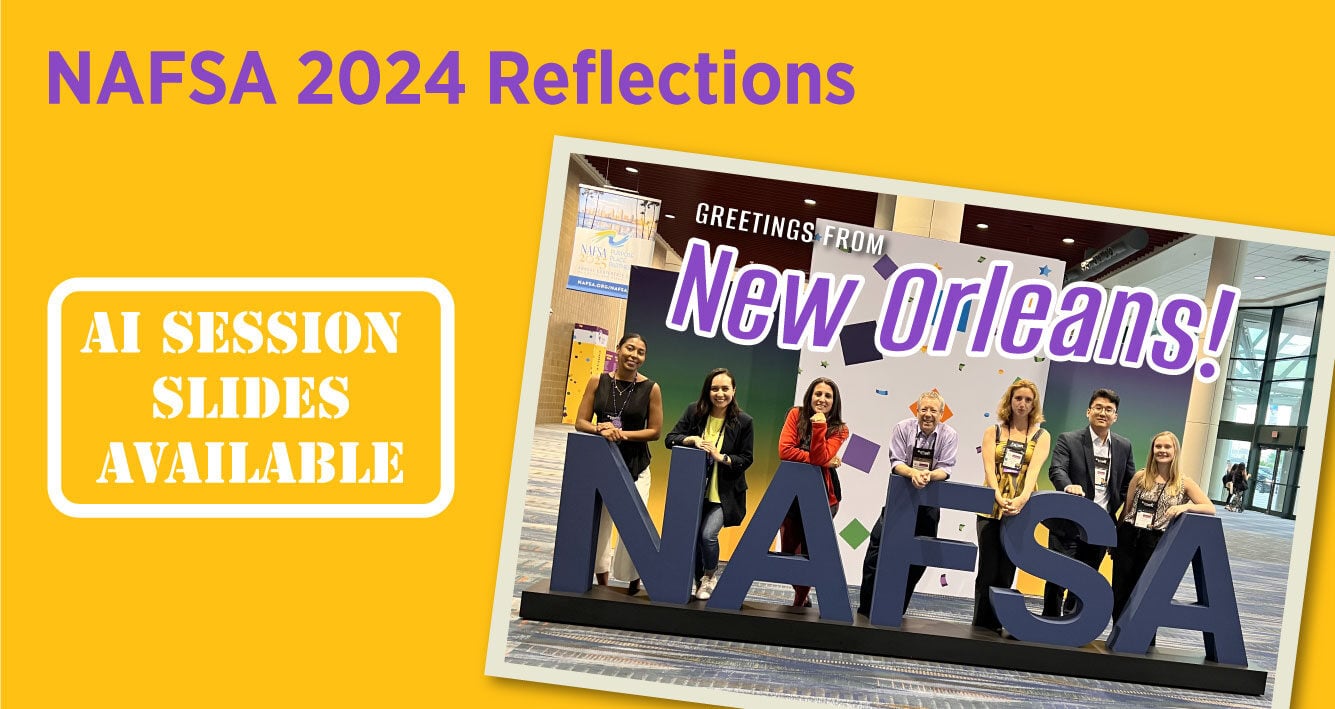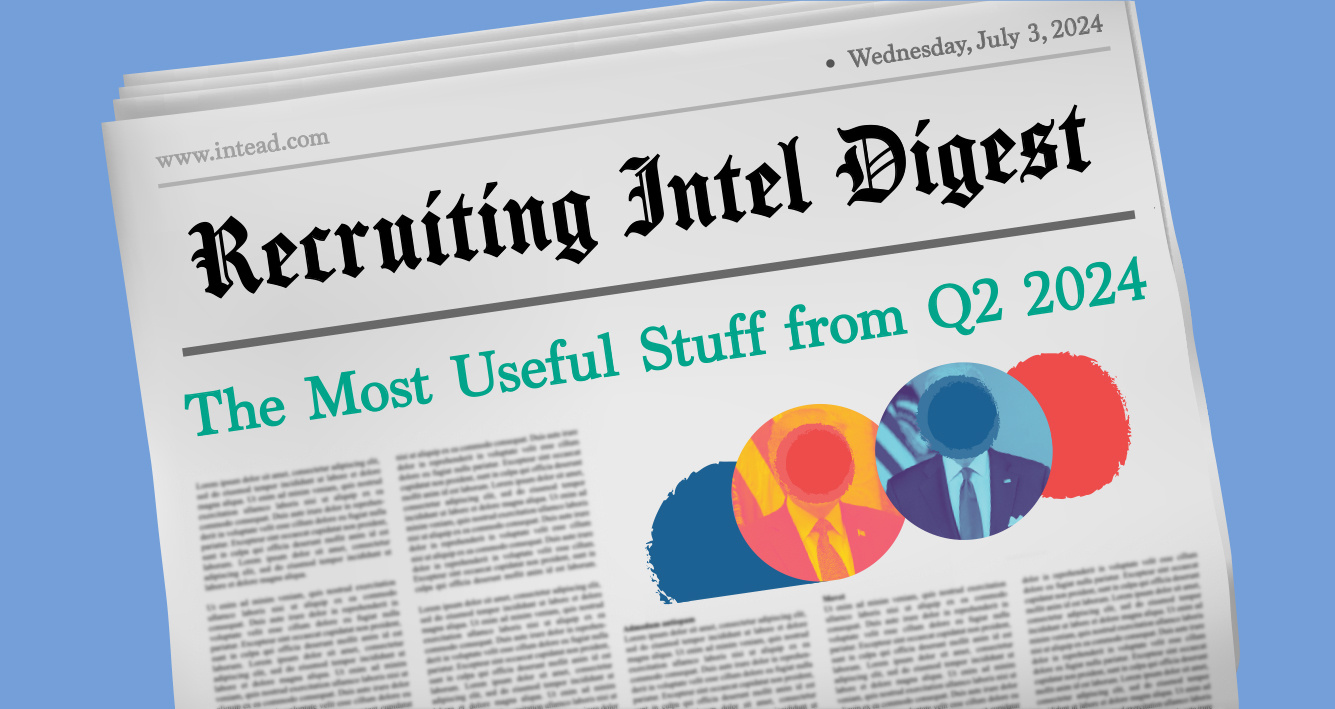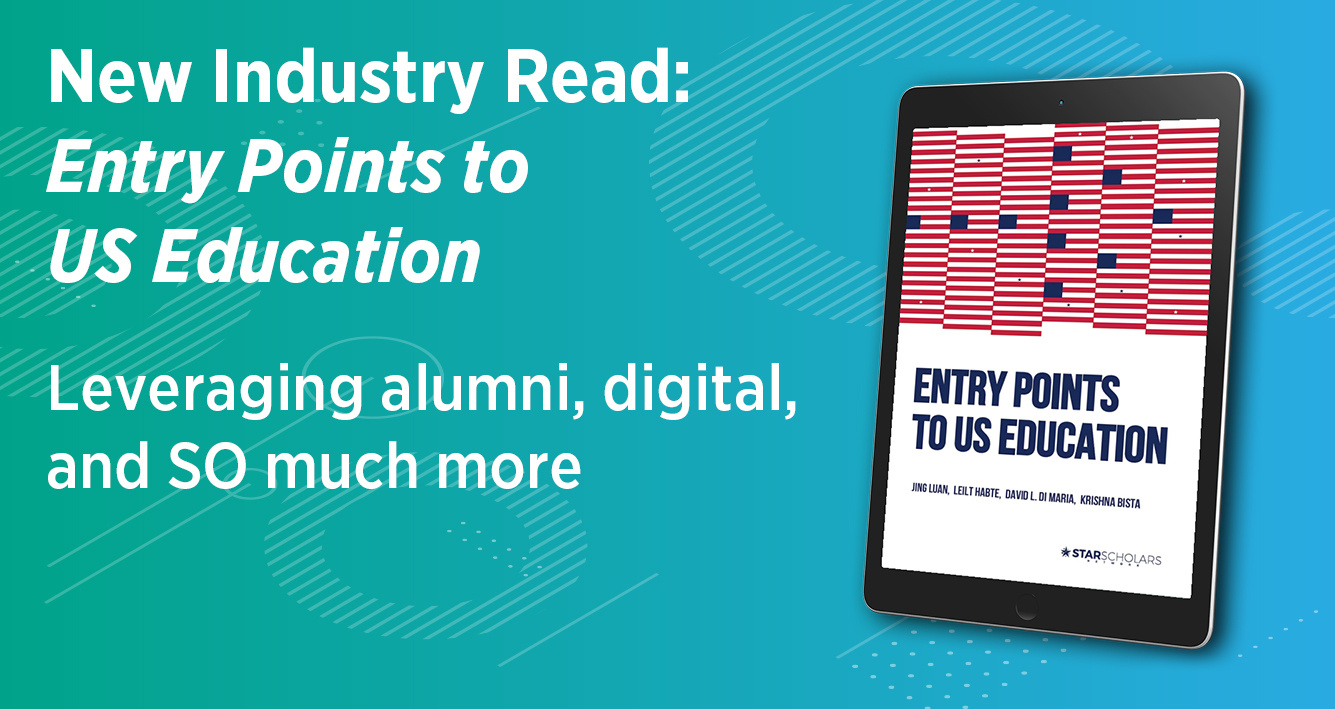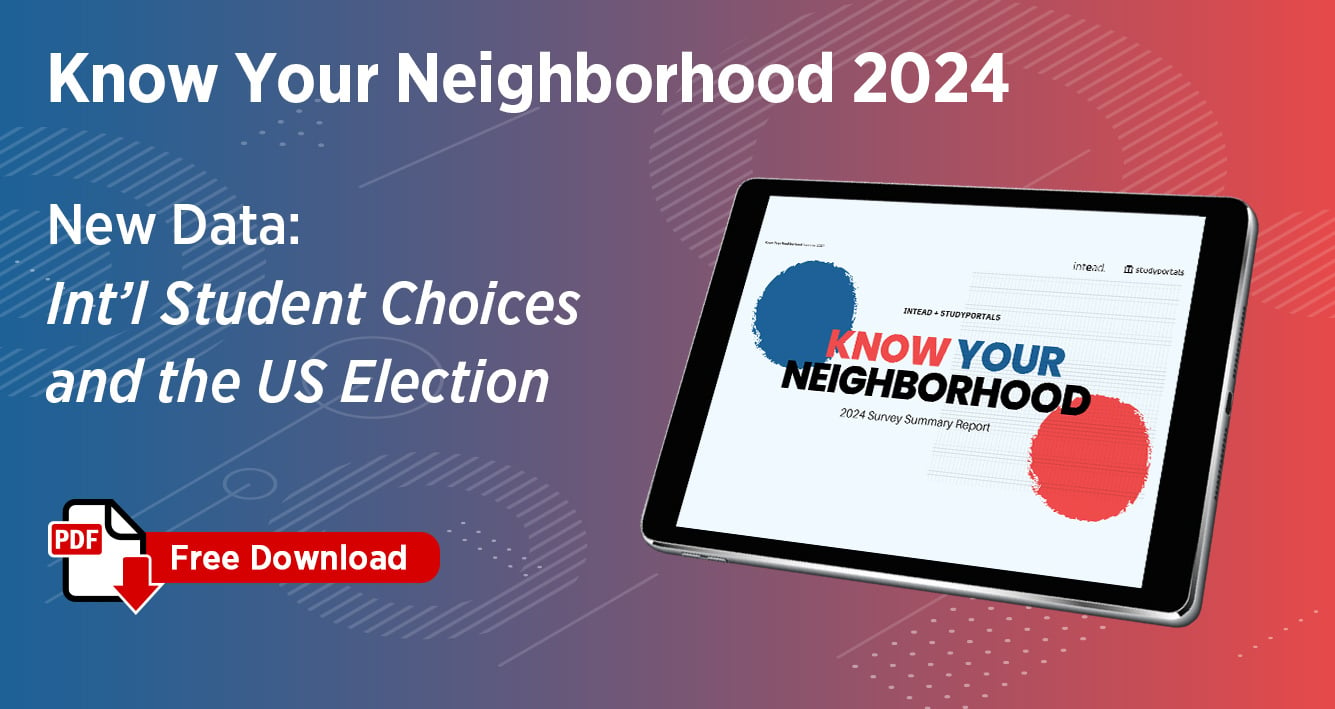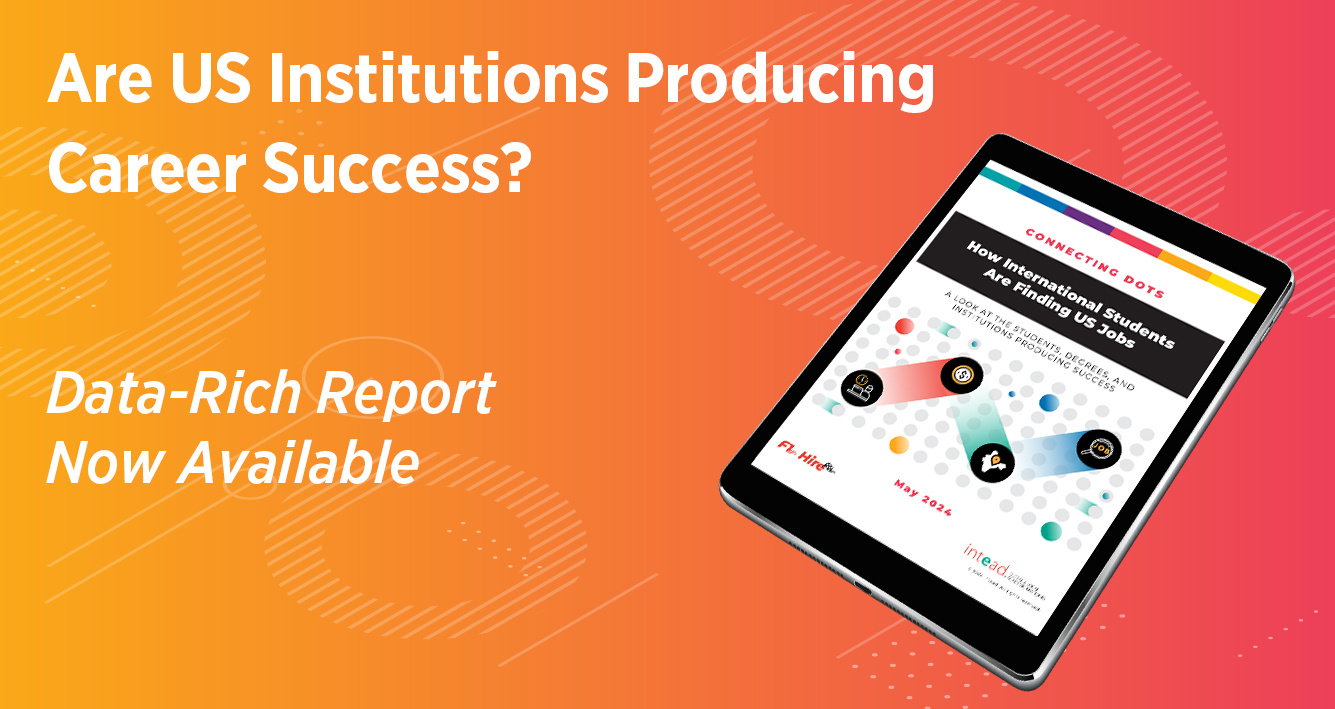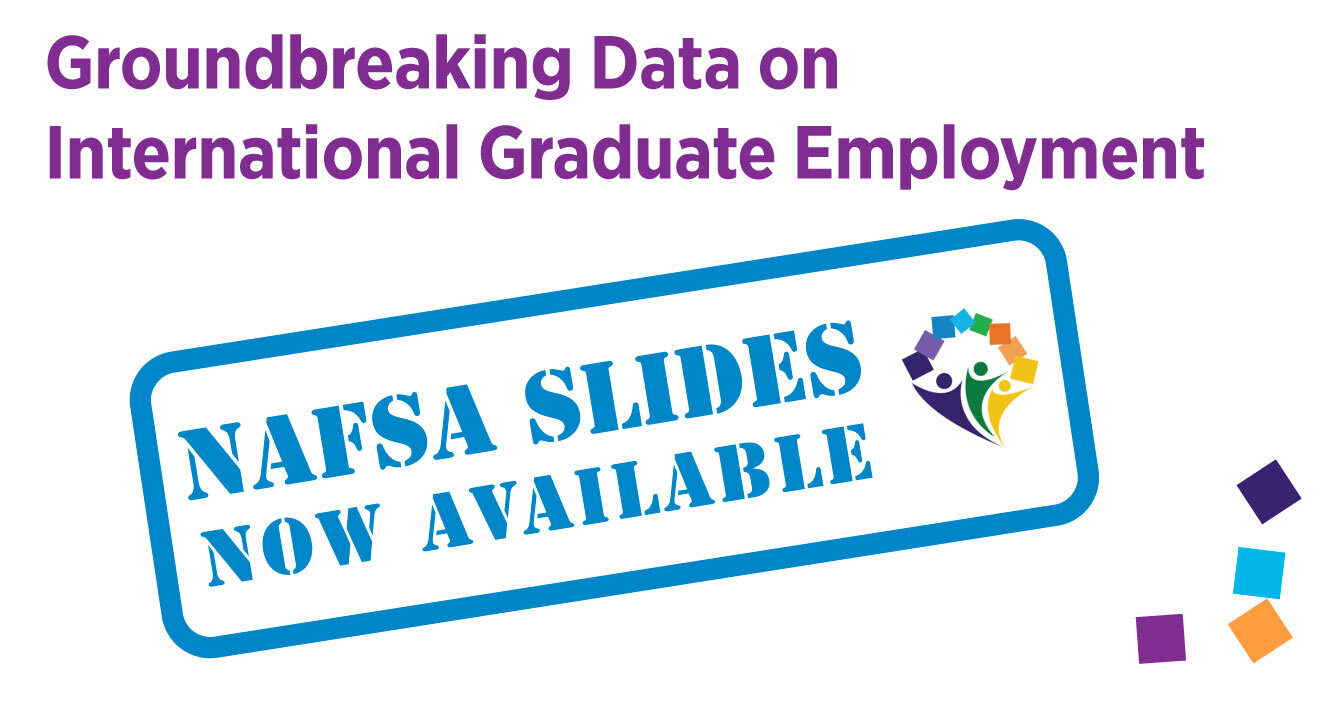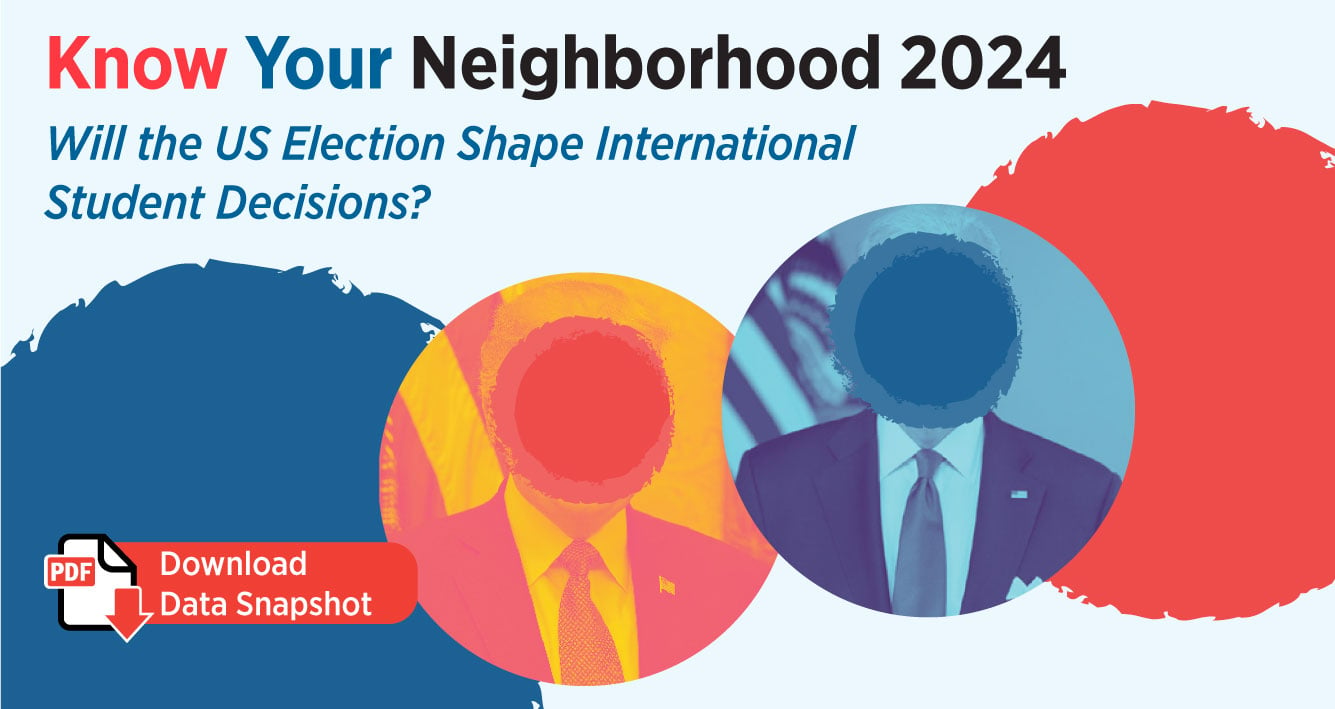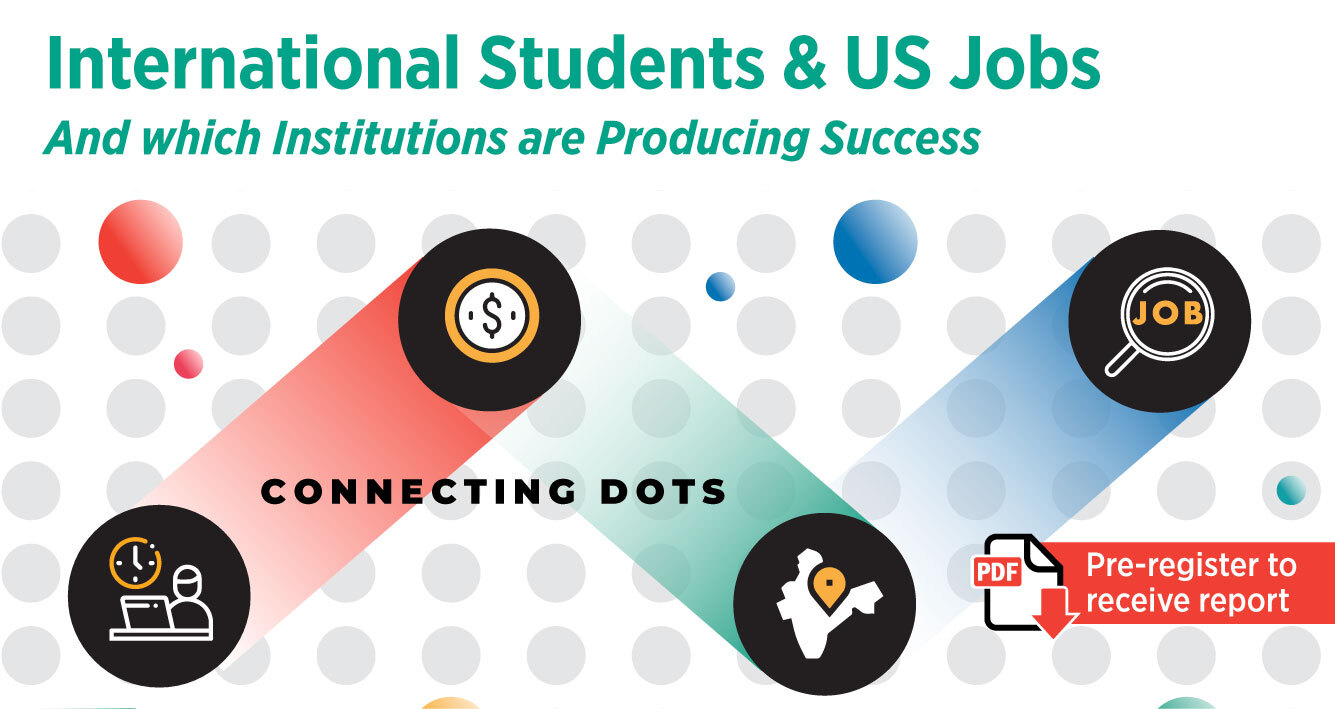Our first time attending the GMAC Conference put on by the talented folks who produce and manage Graduate Management Education (GME) testing and so much more. With 600+ in attendance, the networking flows easily and the conference logistics seem a bit smoother than some of the other conferences we attend.
GMAC, as an organization, has a larger, more international staff than other U.S. academic associations. And they have a revenue stream (from testing) that others in this field do not have. Their global outposts support academic business programs in countries around the world and confirm the value of their entrance exam for institutions in these countries as well.
Conference sessions covered marketing, recruiting, admissions, diversity, program management, and predicting future enrollment, among others. With many concurrent sessions, I found it hard to identify the most valuable use of any given hour in my schedule. That’s a good thing.
Our presentation topic: predicting the student recruitment future based on international data and the global shift toward stronger anti-immigration policies. Our slides will be available to you for the next week before they move to exclusive access for our Intead Plus members.
Our next opportunity to meet!
EducationUSA, Washington, D.C., July 30-August 1. Ben and Virginia Commonwealth University SIO Jill Blondin will share insights on Navigating Budget Challenges in International Recruitment: Practical Strategies for Every Phase. Hope to see you there!
The Resource Center for Industry Insiders
Take your challenge of the day and plop it into our search bar. With 800+ publications and our 15 years of weekly blogging, you will find relevant content on any topic important to enrollment management and student recruiting. Valuable perspective and data ontopics you care about. From agent-university partnerships to predictive modeling and CRM efficiency, to new market development, our Resource Center has you covered. Check it out.
Below we share 4 way-cool and thought-provoking takeaways from the sessions I attended at GMAC. And of course, the slides from my session about the future and how cultivating an innovation mindset is your best approach in the face of national and international policy threats. We compare and contrast very reliable sources (IIE, British Council, and IDP) and make our own case for the value of innovation and perseverance.
Read on for the insights and be sure to scroll to the very bottom for the link to our slide deck – which we think is well worth the scroll ; -)
Read More
